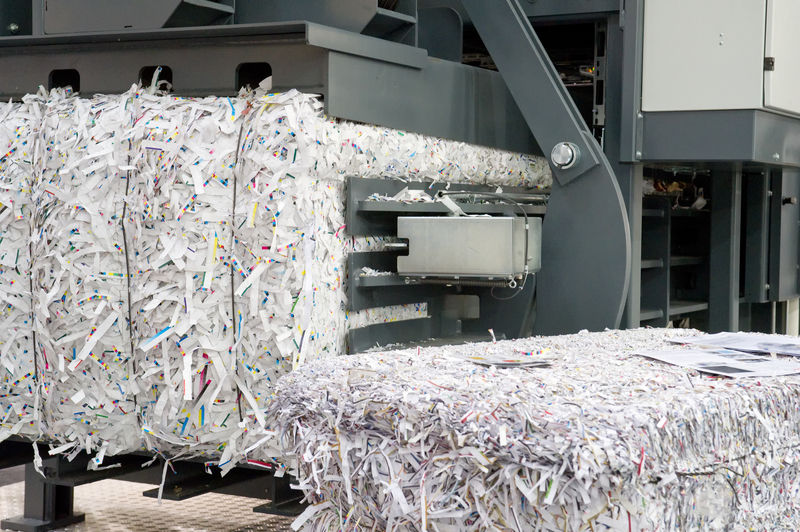Breathe New Personality into Tired Objects Through DIY Upcycling
In today's fast-paced world, where consumption is at an all-time high, DIY upcycling has emerged as both a creative outlet and a sustainable solution. Instead of throwing away worn-out items cluttering your home, why not breathe new personality into tired objects? With a touch of imagination and a dash of effort, you can transform unwanted pieces into unique treasures that reflect your personal style and help the environment.
What is DIY Upcycling?
Upcycling involves taking old or discarded items and giving them a new, often more valuable life. Unlike recycling, which breaks down materials to produce something entirely different, upcycling focuses on retention and transformation. DIY upcycling projects empower us to see potential in what we might otherwise consider junk--be it a chipped teacup, a broken chair, or a threadbare t-shirt.
Why Is Upcycling So Important?
- Environmental Benefits: Reduces landfill waste and minimizes the need for new materials.
- Economic Savings: Cuts costs on home decor and furniture.
- Personalization: Creates one-of-a-kind pieces that showcase your individuality.
- Creativity Unleashed: Sparks innovation as you problem-solve and design creatively.
- Community Building: Encourages collaboration and learning through workshops and online sharing.

How to Start DIY Upcycling: Essential Tips
Begin by looking around your home for objects that might be neglected or heading for the trash. Rather than see their faults, envision their potential. Here's how to get started:
1. Assess and Select the Right Objects
- Look for sturdy materials--wood, glass, metal, and thick fabrics are great candidates.
- Consider the object's structure. Can it be safely handled and altered?
- Think about size and space. Will the new piece fit into your living environment?
2. Gather the Right Tools and Materials
- Basic toolkit: hammer, screwdriver, pliers, and nails.
- Protective gear: gloves, masks, and goggles for safety.
- Craft supplies: paints, brushes, adhesives, sandpaper, and decorative items.
- Repurposed hardware: old handles, hinges, or fabric scraps.
3. Learn Techniques and Get Inspired
- Browse Pinterest, Instagram, and upcycling blogs for ideas and tutorials.
- Join local upcycling communities or workshops for hands-on experience.
- Experiment with simple projects before tackling complex builds.
Creative Ways to Give Fresh Life to Everyday Items
The possibilities for revitalizing tired household objects through DIY upcycling are endless. Here are a few imaginative ideas to help you get started:
1. Furniture: From Outdated to Outstanding
- Painted Dressers: Turn an old dresser into a statement piece with bold paint and new knobs.
- Chair Makeovers: Reupholster worn-out chairs with fresh, vibrant fabric for a modern look.
- Coffee Table Transformations: Repurpose doors or pallets into unique coffee tables by adding hairpin legs and a glass top.
2. Glass Jars & Bottles: Simple Storage Solutions
- Turn empty jars into stylish organizers or candle holders by painting or adding twine accents.
- Create hanging vases by wrapping wire around the necks and suspending from hooks or driftwood.
- Use wine bottles as elegant lamp bases or garden edging.
3. Textile Upcycling: Freshen Up Soft Goods
- Transform old t-shirts into tote bags, rugs, or even pillow covers.
- Patchwork old jeans or sweaters into cozy throws or themed quilts.
- Create chic fabric planters for indoor gardening.
4. Pallets and Crates: Rustic Charm Reinvented
- Reassemble pallets into shelving, bed frames, or garden benches.
- Stack vintage crates into custom bookcases or rolling storage units.
5. Miscellaneous Magic: Unexpected Upcycles
- Convert a ladder into a towel rack or bookshelf.
- Repurpose mason jar lids as picture frames or coasters.
- Use bicycle wheels to craft wall art or creative clock faces.
DIY Upcycling: Step-by-Step Guide for Beginners
If you're eager to breathe personality into tired objects, follow this practical guide for a successful project:
Step 1: Choose Your Object and Vision
- Pick something sturdy but worn, such as a wooden drawer or old lamp.
- Visualize its new role--perhaps as a planter, shelf, or accent decor.
Step 2: Clean & Prep
- Thoroughly clean the item and remove old hardware or loose paint.
- Sand wooden surfaces for smoothness and better paint adhesion.
Step 3: Repair & Reinforce
- Fix wobbly joints with wood glue or tighten screws as needed.
- Patch holes, cracks, or surface damage to create an even working surface.
Step 4: Customize with Paint, Fabrics, or Hardware
- Apply primer and paint for a fresh color, or stain for a rustic upgrade.
- Add new handles, drawer pulls, or attach decorative stencils.
- Consider decoupage, fabric wraps, or mosaic tiles for texture.
Step 5: Assemble & Finish
- Carefully assemble all elements and let paint or adhesive cure fully.
- Polish, varnish, or seal for durability and shine.
Popular DIY Upcycling Project Examples
1. Upcycled Drawer Planters
- Old drawers become charming gardens when lined with plastic and planted with flowers or herbs.
- Use them to add color to patios, balconies, or driveways.
2. Repurposed Suitcase Side Tables
- Stack hard-shell suitcases for a vintage bedside table. Add short legs for balance and style.
- Store extra linens, books, or seasonal clothes inside.
3. DIY T-Shirt Yarn Baskets
- Cut worn-out t-shirts into strips and weave them into baskets or bowls.
- Perfect for holding remotes, toys, or craft supplies.
4. Wine Cork Bulletin Boards
- Glue saved wine corks together in a frame for a functional, decorative message board.
- Easy to personalize with paint or trim.
Advanced Upcycling: Taking Your Projects to the Next Level
Once you gain confidence with basic transformations, challenge yourself by merging materials or adapting items for new uses. Try these ideas:
Blending Materials
- Combine wood and metal to build industrial-style shelving or lighting fixtures.
- Attach textiles to hard surfaces for tactile contrast.
Modular and Multifunctional Upcycles
- Create pieces that adapt to your needs, such as stackable bins or fold-away desks.
- Turn an old wardrobe into a workstation or a pet nook.
Lighting Innovations
- Turn vintage colanders or tin cans into pendant lights.
- Use glass bottles as lamp bases--add fairy lights inside for a whimsical glow.
Upcycling Tips for the Best Results
- Be Patient: Rushing leads to sloppy results. Take your time with preparation and finishing.
- Practice Safety: Wear masks, gloves, and use tools responsibly, especially when sanding or painting.
- Embrace Imperfections: Minor flaws add character and authenticity to your creations.
- Document Your Process: Take before-and-after photos to track progress and inspire others.
- Stay Open-Minded: Sometimes your project will take a new direction--allow creativity to lead.
Benefits of Giving Tired Objects New Personality
Through DIY upcycling, you don't just extend the life of neglected objects. You also:
- Reduce your ecological footprint, conserving resources and landfill space.
- Add originality and soul to your environment; no factory-fresh furniture can replicate it.
- Encourage mindful consumption and stewardship of what you already own.
- Foster creativity, problem-solving, and pride in your home environment.
Plus, the joy of completing a project--and sharing your results with friends or online communities--can be immensely rewarding!
Join the Upcycling Movement Today!
In the quest to breathe new personality into tired objects, DIY upcycling stands out as a powerful combination of creativity, sustainability, and affordability. Each project is a small act of environmental kindness. Whether you start by repainting an old chair or constructing shelves from shipping pallets, every step counts.
Start small, think big, and let your imagination run wild--the stories and possibilities are endless when you bring fresh life to forgotten things. Dust off those "useless" items today and discover how wonderful it is to breathe new personality into tired, everyday objects through DIY upcycling!

Frequently Asked Questions About DIY Upcycling
- What items are easiest for beginners to upcycle?
Start with objects such as glass jars, small furniture, picture frames, or basic textiles. - Can I upcycle even if I lack crafting experience?
Absolutely! Numerous tutorials are available online; start with simple projects to build skills. - Where can I find inspiration for upcycling?
Explore social media, dedicated upcycling websites, or local second-hand stores for ideas. - What are the best paints for furniture upcycling?
Look for chalk paint, acrylic, or latex paints, and always use primer for better adhesion. - Are DIY upcycled items durable?
With proper preparation and finishing, upcycled items can last for years--sometimes longer than store-bought ones!
Final Thoughts: The Art of Reinvention
DIY upcycling is more than just a hobby--it's a way to reconnect with your creativity, care for the planet, and make your home uniquely yours. Next time you think of discarding a tired object, pause and imagine the new stories it could tell. Breathe new personality into tired objects through DIY upcycling--and turn yesterday's clutter into tomorrow's conversation pieces!